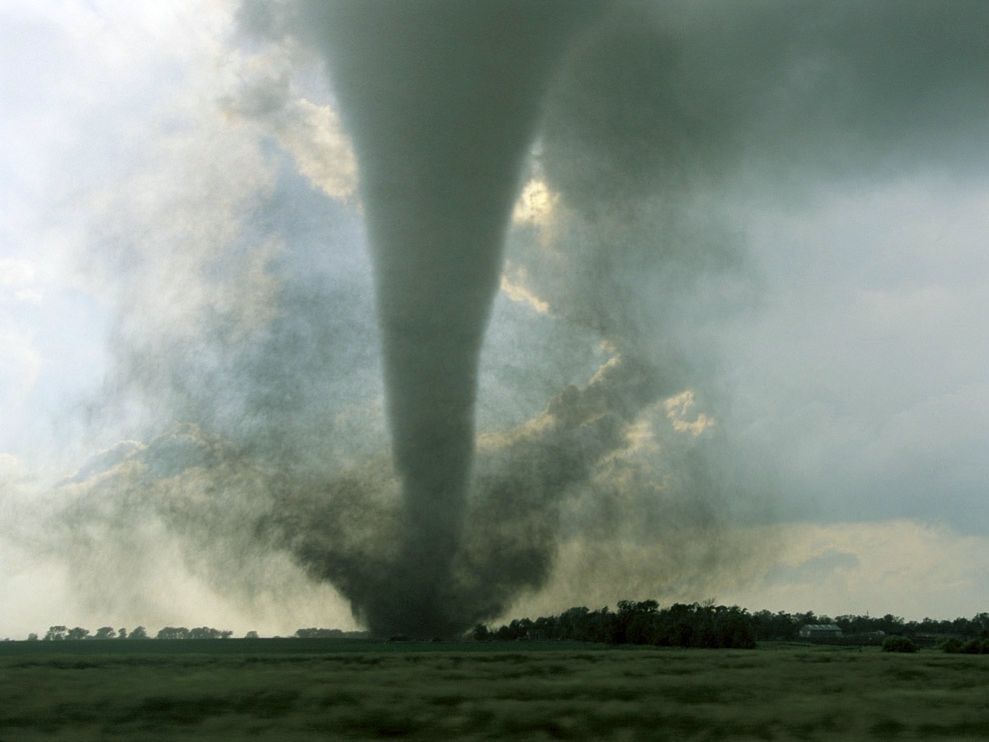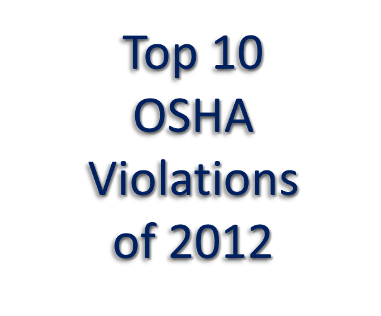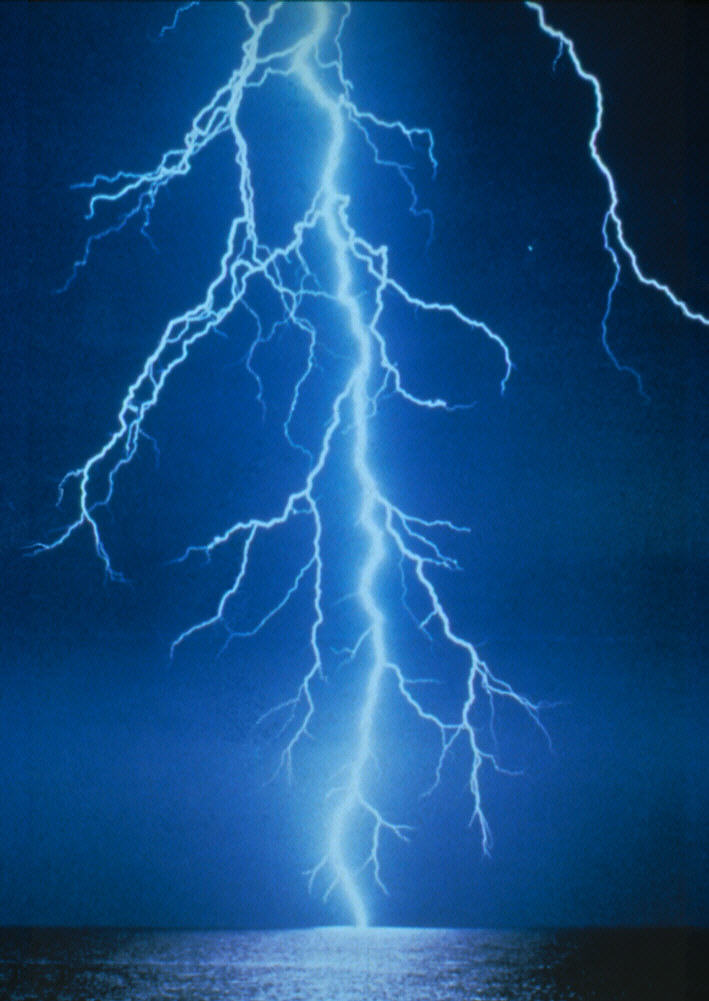 Thunder and lightning are very dangerous. According to the National Weather Service “if you can hear thunder, you are within striking distance and you should seek shelter immediately.”Lightning can strike up to 10 miles away from the rain area in a thunderstorm. The first stroke of lightning is just as deadly as the last. If they sky looks threatening, you should take shelter even if you don’t hear thunder.Another tip from the National Weather Service is to use a “30-30 rule” where visibility is good and there is nothing obstructing your view of thunderstorms. When you see the lightning, count the time until you hear thunder. If that time is 30 seconds or less, the thunderstorm is within 6 miles of you and is dangerous. It is also recommended that you wait at least 30 minutes after a thunderstorm before returning to the outdoors, as the threat of lightning can continue long after a storm subsides.
Thunder and lightning are very dangerous. According to the National Weather Service “if you can hear thunder, you are within striking distance and you should seek shelter immediately.”Lightning can strike up to 10 miles away from the rain area in a thunderstorm. The first stroke of lightning is just as deadly as the last. If they sky looks threatening, you should take shelter even if you don’t hear thunder.Another tip from the National Weather Service is to use a “30-30 rule” where visibility is good and there is nothing obstructing your view of thunderstorms. When you see the lightning, count the time until you hear thunder. If that time is 30 seconds or less, the thunderstorm is within 6 miles of you and is dangerous. It is also recommended that you wait at least 30 minutes after a thunderstorm before returning to the outdoors, as the threat of lightning can continue long after a storm subsides.
Month: May 2013
How to Protect Your Back
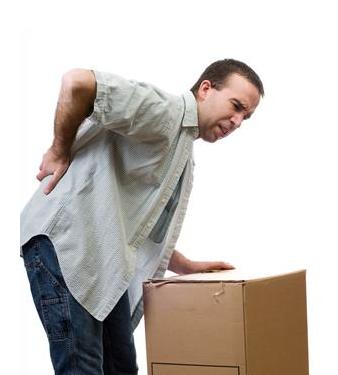 According to the Nicholas Institute of Sports Medicine and Athletic Trauma (NISMAT) at Lenox Hill Hospital in New York, these are step-by-step instructions for proper lifting:
According to the Nicholas Institute of Sports Medicine and Athletic Trauma (NISMAT) at Lenox Hill Hospital in New York, these are step-by-step instructions for proper lifting:
- Stand close to the object with your feet spread apart, about the width of your shoulders.
- Squat, bending your knees and hips, while keeping your back in proper alignment.
- Contract your stomach muscles.
- Lift with your leg muscles, not your back. Take care not to lift and twist at the same time.
- If you’re lifting the object with another person, do it in unison. One person should say when to lift, walk, and unload.
Safe Knife Skills in the Kitchen
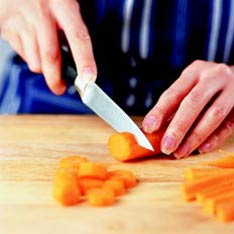 Concentrate on the task at hand and never allow yourself to be in a hurry. Distraction is a common cause of cuts and should be avoided at all costs.
Concentrate on the task at hand and never allow yourself to be in a hurry. Distraction is a common cause of cuts and should be avoided at all costs.
- Control – Any time you cut any vegetable, cut it in half first to create a flat surface and make it easier to control. Round fruits and vegetables then can’t roll away from you and the knife.
- Stay sharp – Always use a sharp knife. Seemingly against common sense, a dull knife is dangerous. Using a sharp knife makes your slicing quick and easy, and allows the knife to work for you. It eliminates struggling with the knife or pushing to get it through food. Electric knife sharpeners work wonders and are available at culinary stores.
- Use a cutting board – Always cut on a wooden cutting board. Glass and plastic will dull your knives terribly — and we’ve already discussed what that leads to. Treat your wood cutting board with mineral oil prior to first use and then treat as needed from then on.
- Mes en plas – Mes en plas (sounds like menopause, but with an “n”) is the gathering of all your ingredients. Never start the mechanics of a meal (including slicing and cutting) unless you have all your tools and ingredients in front of you. You don’t want to get halfway through and find you don’t have something you need. This approach lessens your chances for mistakes and accidents.
- Let it fall – Never try to catch a falling knife. That seems pretty elementary, but you really need to establish that thought in your mind. This prevents the knee-jerk reaction that will cause you to reach out to stop the knife as it’s flying off the cutting board at your $30 pedicure.
- Keep it clean – Avoid cross-contamination by cleaning your knife in between food items you’re chopping or cutting. It’s as equally important to clean your cutting board. You’re asking for trouble when you cut chicken on a wood cutting board and then slice fresh vegetables. Hot water and dish soap remedy that threat.
- Wash separately – Never put a knife in a sink full of water. Suds and dirty water can conceal knives, and when you put your hand in there, it’s like giving a high five to Edward Scissorhands.
Stress at Work
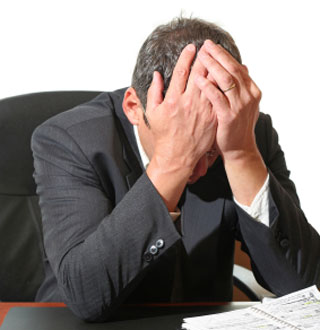 Early Warning Signs of Job Stress
Early Warning Signs of Job Stress
- Headache
- Sleep disturbances
- Difficulty in concentrating
- Short temper
- Upset stomach
- Job dissatisfaction
- Low morale
Job Stress and Health: What the Research Tells Us
- Cardiovascular Disease: Many studies suggest that psychologically demanding jobs that allow employees little control over the work process increase the risk of cardiovascular disease.
- Musculoskeletal Disorders: On the basis of research by NIOSH and many other organizations, it is widely believed that job stress increases the risk for development of back and upper- extremity musculoskeletal disorders.
- Psychological Disorders: Several studies suggest that differences in rates of mental health problems (such as depression and burnout) for various occupations are due partly to differences in job stress levels. (Economic and lifestyle differences between occupations may also contribute to some of these problems.)
- Workplace Injury: Although more study is needed, there is a growing concern that stressful working conditions interfere with safe work practices and set the stage for injuries at work.
- Suicide, Cancer, Ulcers, and Impaired Immune Function: Some studies suggest a relationship between stressful working conditions and these health problems. However, more research is needed before firm conclusions can be drawn.
via CDC – NIOSH Publications and Products – STRESS…At Work (99-101).
Tornado Season – Be Prepared
To begin preparing, you should build an emergency kit and make a family communications plan.
Listen to NOAA Weather Radio or to commercial radio or television newscasts for the latest information. In any emergency, always listen to the instructions given by local emergency management officials.
Be alert to changing weather conditions. Look for approaching storms.
Look for the following danger signs:
- Dark, often greenish sky
- Large hail
- A large, dark, low-lying cloud (particularly if rotating)
- Loud roar, similar to a freight train.
If you see approaching storms or any of the danger signs, be prepared to take shelter immediately.
Planning For A Safe Workplace
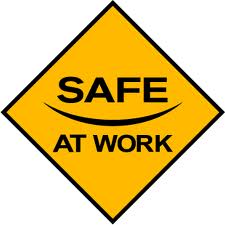 Falls, lifting injuries, and fires are dangerous and common in the workplace, but that’s just the beginning. There are many possible safety issues that can occur at your office or factory. Sometimes the best workplace safety arises out of simple good planning and smart thinking.
Falls, lifting injuries, and fires are dangerous and common in the workplace, but that’s just the beginning. There are many possible safety issues that can occur at your office or factory. Sometimes the best workplace safety arises out of simple good planning and smart thinking.
Every single workplace should have a safety committee and safety plan in place. If you don’t have safety committees at your workplace, then propose one.
Hand Washing: Reducing the Risk of Common Infections
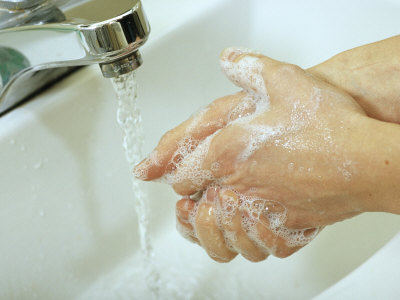 Is it important to wash your hands?
Is it important to wash your hands?
Simply put, yes. Hand washing is the single most effective way to prevent the spread of infections. You can spread certain “germs” (a general term for microbes like viruses and bacteria) casually by touching another person. You can also catch germs when you touch contaminated objects or surfaces and then you touch your face (mouth, eyes, and nose).
“Good” hand washing techniques include using an adequate amount of soap, rubbing the hands together to create friction, and rinsing under running water. The use of gloves is not a substitute for hand washing.
via Hand Washing: Reducing the Risk of Common Infections : OSH Answers.
Powered Industrial Trucks (Forklift’s)
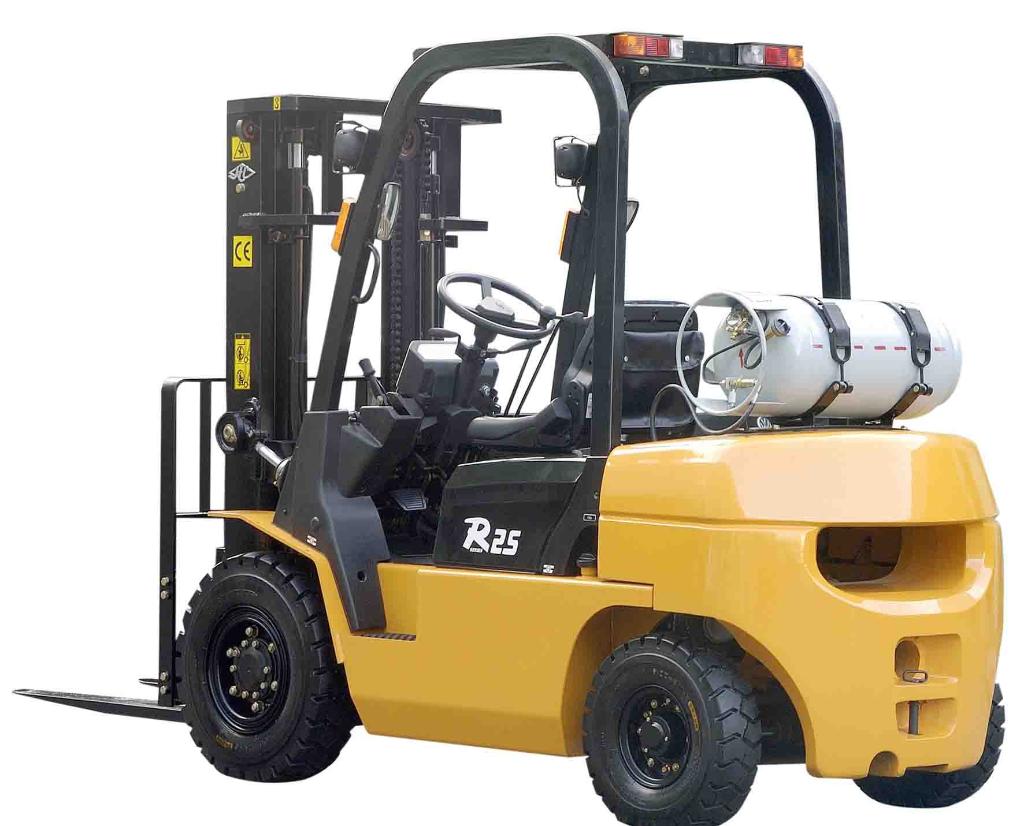 What are the hazards associated with operating powered industrial trucks?
What are the hazards associated with operating powered industrial trucks?
There are many types of powered industrial trucks. Each type presents different operating hazards. For example, a sit-down, counterbalanced high-lift rider truck is more likely than a motorized hand truck to be involved in a falling load accident because the sit-down rider truck can lift a load much higher than a hand truck. Workplace type and conditions are also factors in hazards commonly associated with powered industrial trucks. For example, retail establishments often face greater challenges than other worksites in maintaining pedestrian safety. Beyond that, many workers can also be injured when (1) lift trucks are inadvertently driven off loading docks; (2) lifts fall between docks and an unsecured trailer; (3) they are struck by a lift truck; or (4) they fall while on elevated pallets and tines.
What can be done to reduce the hazards related to powered industrial trucks?
Determining the best way to protect workers from injury largely depends on the type of truck operated and the worksite where it is being used. Employers must ensure that each powered industrial truck operator is competent to operate a powered industrial truck safely, as demonstrated by the successful completion of the training and evaluation specified in 29 CFR 1910.178(l)(1).
Things to Do After a Car Accident
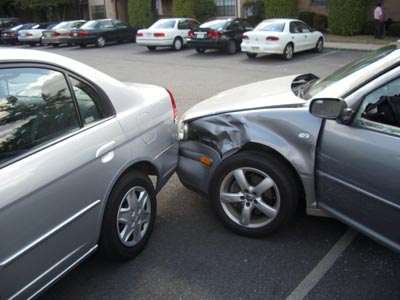 Use your cell phone to take pictures of the accident.
Use your cell phone to take pictures of the accident.- If you are purchasing a new vehicle, be sure to note the standard and optional safety features, such as where and how many air bags come with the car. Research crash test results, and consider built-in monitoring services such as General Motors’ OnStar system. These can notify emergency personnel of an accident.
- If you have a cell phone, make any calls you need to make either in the privacy of your car, if you can, or away from any witnesses. Again, do not try to explain what happened to anyone on the phone, e.g. the tow truck driver. Just say, there has been an accident.
- Remain calm and above all remain silent. You will likely be disoriented and confused after a serious accident, even if think you’re uninjured. Many people will arrive at the scene of the accident and ask you “What happened?” You do not have to speak to anyone about what you think may have caused the accident. Above all, avoid saying anything that may incriminate you, such as “I’m sorry” or “I think it may have been speeding” etc. Such comments could end up causing you thousands of dollars.
- Write a list to yourself of what to do in case of an accident and keep it in your glove box. Read it and follow the instructions which you wrote to yourself.
- If you aren’t the one driving, in most, if not all cases, the middle back seat is the safest place to be, that is, with seatbelts. If the car crashes, you are in the middle seat and you are not wearing a seatbelt, you could be ejected from the vehicle, with fatal results.
- Be sure to exchange information with others involved in the accident and get information from eyewitnesses.
The Top 10 OSHA Violations of 2012
1. Fall Protection (29 CFR 1926.501)
2. Hazard Communication (29 CFR 1910.1200) (mainly due to lack of training, labeling fail, access to MSDSs and lacking correct MSDSs)
3. Scaffolding (29 CFR 1926.451) – (Big problem, people using scaffoldings as ladders and ladders as scaffolding, assuming one could work for the other.)
4. Respiratory Protection (1910.134)
5. Ladders (1926.1053)
6. Machine Guarding – General Requirement (29 CFR 1910.212)
7. Powered Industrial Trucks (29 CFR 1910.178)
8. Electrical – Wiring Methods (29 CFR 1910.305)
9. Control of Hazardous Energy – Lockout/Tagout (1910.147)
10.Electrical – General (29 CFR 1910.303)

